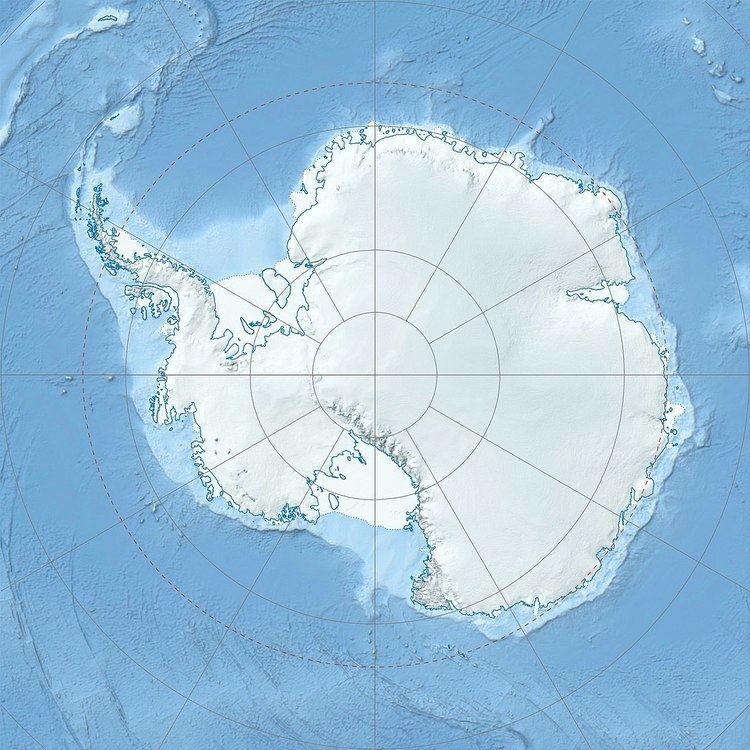Countries Antarctic, Antarctica | ||
 | ||
Mountains Mount Markham, Mount Lecointe, Mount Rabot, Mount Predoehl | ||
The Queen Elizabeth Range (83°20′S 161°30′E) is a rugged mountain range in Antarctica paralleling the eastern side of Marsh Glacier for nearly 160 km (100 mi) from Nimrod Glacier in the north to Law Glacier in the south. Mount Markham (4,350 m), is the highest elevation in the range.
Contents
- Map of Queen Elizabeth Range Antarctica
- Mount Bonaparte
- Inaccessible Cliffs
- Mount Lecointe
- Mount Predoehl
- Mount Rabot
- Prince Andrew Plateau
- Sherwin Peak
- References
Map of Queen Elizabeth Range, Antarctica
Named by J.H. Miller of the New Zealand party of the Commonwealth Trans-Antarctic Expedition (1956–58) who, with G.W. Marsh, explored this area. It was named for Queen Elizabeth II, the patron of the expedition.
Mount Bonaparte
Mount Bonaparte (83°05′S 160°50′E) is a mountain, 3,430 metres (11,253 ft) high, standing 4 mi NW of Mount Lecointe. Discovered by the British Antarctic Expedition (1907–09) under Shackleton, and named for Prince Roland Bonaparte, President of the Société de Géographie of Paris from 1910-1924.
Inaccessible Cliffs
Inaccessible Cliffs (82°33′S 160°48′E) is a line of steep cliffs, interrupted by several glaciers, which form the northern escarpment of the range. The escarpment borders the southern side of the Nimrod Glacier which is very heavily crevassed. Named by the northern party of the New Zealand Geological Survey Antarctic Expedition (NZGSAE) (1961–62) because of their general inaccessibility.
Mount Lecointe
Mount Lecointe (83°09′S 161°09′E) is a conspicuous mountain, 3,620 metres (11,877 ft) high, located 5 km (3 mi) NW of Mount Rabot in the Queen Elizabeth Range. Named by the British Antarctic Expedition (1907–09) for Lt. Georges Lecointe, who was second in command of the Belgian Antarctic Expedition (1897–99) under Adrien de Gerlache.
Mount Predoehl
Mount Predoehl (82°56′S 163°11′E) is a partly snow-covered mountain, 1,710 metres (5,610 ft) high, just north of lower Pavlak Glacier. Mapped by the United States Geological Survey (USGS) from Tellurometer surveys and Navy air photos, 1960-62. Named by Advisory Committee on Antarctic Names (US-ACAN) for Martin C. Predoehl, United States Antarctic Research Program (USARP) meteorologist at McMurdo Station, 1961–62 and 1962-63.
Mount Rabot
Mount Rabot (83°11′S 161°17′E) is a mountain, 3,335 m, standing 5 km (3 mi) SE of Mount Lecointe. Discovered and named by the British Antarctic Expedition (1907–09). Charles Rabot was editor of La Geographie, bulletin of the Societe Geographique, Paris, and was an outstanding glaciologist of that period.
Prince Andrew Plateau
Prince Andrew Plateau (83°38′S 162°0′E) is an ice-covered plateau, about 40 nautical miles (70 km) long and 15 nautical miles (28 km) wide, lying south of Mount Rabot. Named by the New Zealand Geological Survey Antarctic Expedition (NZGSAE) (1961–62) for Prince Andrew, Duke of York, son of Queen Elizabeth II of the United Kingdom.
Sherwin Peak
Sherwin Peak (82°37′S 161°48′E) is a peak, 2,290 m (7,513 ft) high, surmounting the east side of Otago Glacier 8 km (5 mi) southeast of Mount Chivers, in the northern part of the range. Mapped by the United States Geological Survey (USGS) from Tellurometer surveys and Navy air photos, 1960-62. Named by Advisory Committee on Antarctic Names (US-ACAN) for James S. Sherwin, ionospheric scientist at Little America V, 1958.
